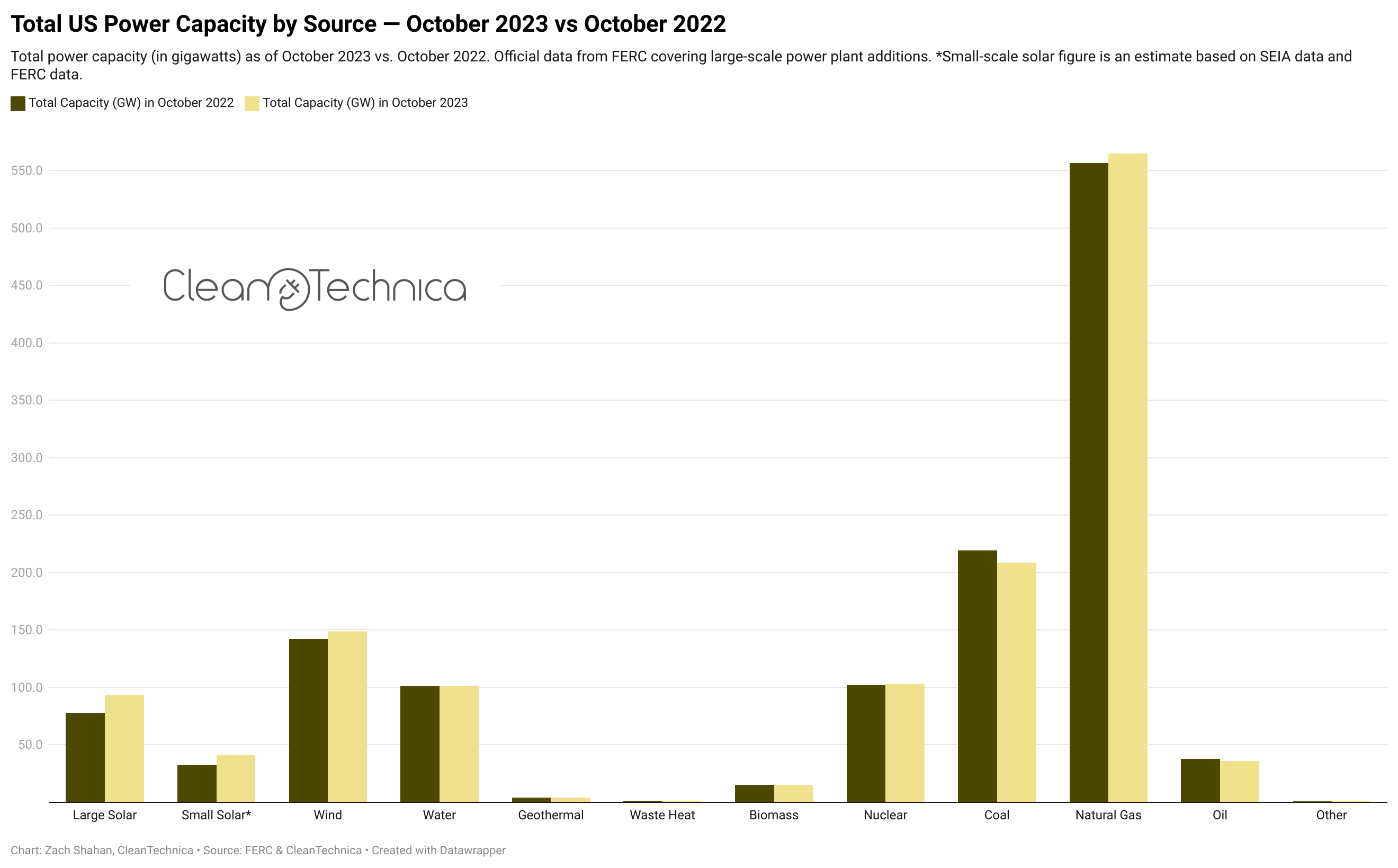Sign up for daily news updates from CleanTechnica on email. Or follow us on Google News!
I just wrapped up reports on new power capacity in the United States and electricity generation in the United States. Clearly, the trend is toward more renewables and less coal. Aside from showing power capacity additions from month to month by energy source, the Federal Energy Regulatory Commission (FERC) includes a section in its monthly reports that shows expected power capacity retirements in the coming 3 years. It’s a fascinating forecast to look at.
First, though, let’s set the stage for total installed power capacity in the United States. Renewable energy sources have risen to about 30.7% of total installed power capacity across the country in October 2023, based on FERC data and a CleanTechnica estimate for small-scale solar. That’s up from 29% of total installed power capacity across the country in October 2022. Solar power now accounts for about 10.2% of US power capacity, and wind power accounts for another 11.3%. Hydropower accounts for about 7.7%, while nuclear power accounts for 7.8%.
The big dog, fossil gas (aka “natural gas”), accounts for about 42.8% of US power capacity, down from 43.1% in October 2022. The former big dog, coal, is down to 15.8%, compared to 17% in October 2022. But let’s look back a bit further on coal and also look forward a few years.
Coal accounted for 30.4% of US power capacity back in 2010, and then 19.7% in 2020. Being down to 15.8% in October 2023, it looks like we will see an even more significant drop in coal’s share of the power capacity market in this decade. It looks like coal will be below 10% of the market by 2030.
And here’s the real clincher: Look at FERC’s forecast for new power capacity additions and expected retirements (below).
According to this FERC forecast, 21 gigawatts (GW) of coal power capacity are expected to be retired in the next 3 years in the USA, while no coal power is expected to be added.
In contrast, 211 GW of solar power capacity is expected to be added in that same period of time, and more conservatively, 88 GW are “high probability additions.” That’s a bit insane, but it’s also not surprising.
Look again at the current numbers below and how that would change things. Coal power capacity would drop to 187 GW and solar power would nearly double or much more than double (note that the FERC additions forecast is only for large-scale solar power projects).
Wind power capacity is forecasted to grow by 20 GW to 62 GW, while net change in fossil gas power capacity is expected to be somewhere between 2 GW and 12 GW.
And all of that is just the forecast for the next 3 years.
Hello, sunshine! The 2020s is looking to be another great decade for the transition to clean renewable energy.
Have a tip for CleanTechnica? Want to advertise? Want to suggest a guest for our CleanTech Talk podcast? Contact us here.
Our Latest EVObsession Video
https://www.youtube.com/watch?v=videoseries
I don’t like paywalls. You don’t like paywalls. Who likes paywalls? Here at CleanTechnica, we implemented a limited paywall for a while, but it always felt wrong — and it was always tough to decide what we should put behind there. In theory, your most exclusive and best content goes behind a paywall. But then fewer people read it!! So, we’ve decided to completely nix paywalls here at CleanTechnica. But…
Thank you!
CleanTechnica uses affiliate links. See our policy here.







